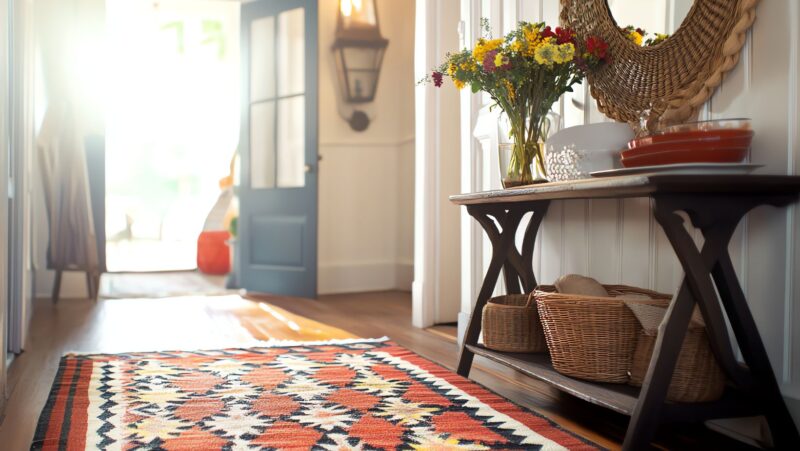Hard water is a quiet troublemaker in many households. It leaves behind dull patches on taps, a chalky film on shower glass, and a stubborn crust inside kettles and coffee machines. These mineral deposits build up gradually as water evaporates, leaving calcium and magnesium behind. At first, it is just cosmetic, but over time, thick limescale can affect water flow, shorten the lifespan of appliances, and make even freshly cleaned areas look tired. Instead of approaching it as a one-time battle, it’s better to treat limescale control as an easy-to-maintain routine woven into daily and weekly habits.
Table of Contents
ToggleUnderstanding Surfaces Before You Start
Not all materials respond the same to cleaning methods. Smooth surfaces like tempered glass, ceramic tiles, and chrome fixtures can usually handle a mild acidic cleaner when used properly. Acrylic bathtubs, plastic trims, and natural stone like marble or limestone are more sensitive and can be damaged by harsher products. Taking a moment to identify what kind of surface you are dealing with prevents accidental etching or discoloration. A quick spot test in a hidden area is always a wise start, no matter how gentle the cleaner claims to be.
How To Remove Thick Limescale Without Scratching Or Dulling Surfaces
When deposits build up into a hard, visible crust, gentle wiping won’t be enough. Anyone looking for reliable advice on how to remove thick limescale should begin by applying a soaking method using diluted white vinegar or a citric acid solution. Place a soaked cloth over the affected area and keep it moist so the minerals have time to loosen. Once softened slightly, use a non-scratch pad or plastic scraper to lift the layers gradually rather than forcing them off in one go. On glass or ceramic, a careful repeat of soaking and light scraping often brings back the shine. For sensitive materials, switch to a stone-safe product and shorten contact time. The goal is always the same: break down the mineral layer slowly while preserving the finish underneath.
Simple Daily Habits That Make a Big Difference
Small maintenance steps prevent major cleaning sessions later. After showering, quickly run a squeegee over glass panels and tile walls to remove water drops before they dry. Wipe around taps and worktops after evening use to stop film buildup.

Leave the lid of a kettle open after boiling so the inside dries faster instead of allowing moisture to settle. These habits take only seconds but drastically reduce how much limescale can form between deeper cleans.
Dealing with Appliances the Smart Way
Kettles, coffee machines, and steam irons are hotspots for scale build-up because they heat water directly. Routine descaling once a month in hard-water regions keeps them efficient and extends their lifespan. Most appliances can be cleaned with a simple solution of vinegar and water brought to a boil or left to soak inside the water chamber. Always rinse thoroughly afterward to prevent lingering taste. A consistent schedule is more effective than aggressive cleaning after months of buildup.
Improving Ventilation and Moisture Control
Steam and condensation are major contributors to limescale. In bathrooms, keep an extractor fan running for at least 15 minutes after showers and crack open a window whenever possible. In kitchens, use lids while boiling water and let cooking steam escape rather than condense on surfaces. Lowering your hot water temperature slightly can slow mineral crystallisation too, without making showers less comfortable. Controlling moisture creates less opportunity for minerals to settle and gradually harden.
Tools and Products That Help Without Harm
You don’t need a cupboard full of chemicals. A spray bottle filled with a mild vinegar solution, a squeegee, microfibre cloths, and a plastic scraper cover most situations. For convenience, keep them within arm’s reach of areas that see frequent water use. If you prefer commercial descalers, choose products suited to your surface and avoid mixing them with bleach or strong detergents. When used intentionally, even simple household items are enough to keep surfaces looking fresh.
What to Do If Limescale Keeps Returning
If despite your efforts limescale returns rapidly, consider adding a point-of-use filter for your kitchen tap or fitting a softening cartridge to your appliances. In very hard-water regions, a whole-home softening system may be worth the investment, especially if you want to protect multiple bathrooms and high-end fixtures. Even then, a quick daily wipe-down will always outperform occasional intensive cleaning in terms of long-term effort and results.
Keeping It Manageable: A Weekly Rhythm
Rather than saving everything for a big cleaning session, spread tasks out. Early in the week, wipe taps and shower fixtures. Midweek, check glass and tiles. At the weekend, descale your kettle or coffee machine while preparing breakfast. These small, predictable actions prevent limescale from ever becoming thick enough to demand forceful scraping, protecting both your time and your home’s finishes.





